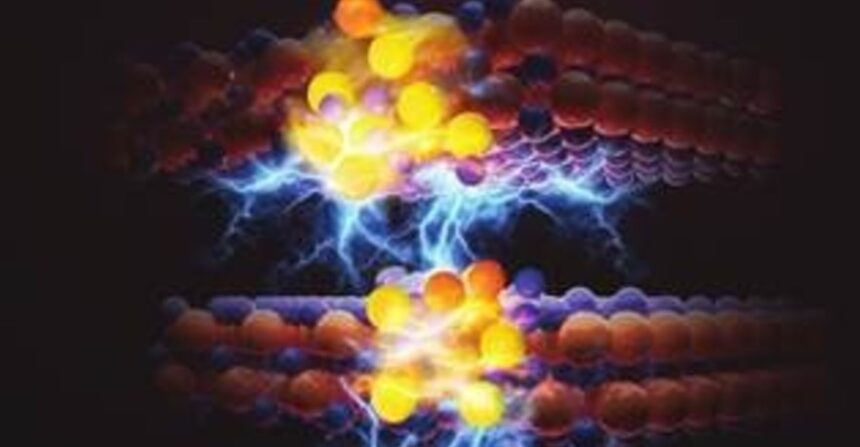November 19, 2024: researchers have unlocked an innovative way to turn crystals into glass using significantly less energy—a finding that could dramatically change the way data storage devices work in the future. This breakthrough, published in Nature, could lead to more power-efficient memory storage in everything from smartphones to computers.
Currently, data storage relies on a process called “melt-quenching,” where crystals are heated to extreme temperatures—above 800°C—and rapidly cooled to achieve a glassy state. This method is energy-intensive, especially during the writing process. However, researchers from the Indian Institute of Science (IISc), in collaboration with teams from the University of Pennsylvania, MIT, and Harvard, have discovered a way to bypass this step altogether, potentially saving enormous amounts of electricity.
The key to this new method lies in a unique material: indium selenide. Known for its 2D ferroelectric properties, this material can undergo a “shock” transformation when an electric current is passed through it, instantly turning large sections of the material into glass without needing to pass through the liquid phase. This process uses a billion times less power than traditional techniques, making it a game-changer for energy efficiency in memory storage.
Breakthrough in Data Storage: New ‘Shock’ Method Could Slash Energy Consumption
How It Works
Indium selenide, when exposed to an electric current, undergoes a fascinating physical change. The material’s 2D layers slide against one another, creating domains that act like miniature pockets of charge. As these domains collide, they create mechanical shocks, similar to tectonic plate movements during an earthquake. This shock triggers an avalanche effect, causing more domains to form, eventually turning the entire material into glass.
This novel shock-driven transformation has far-reaching implications. Traditionally, memory storage devices like CDs, DVDs, and Blu-ray discs rely on heating and quenching crystalline materials to store data, which is an inefficient process. By skipping the heating step and converting the crystal directly into glass with an electric current, devices could store data using vastly less energy.
The Potential Impact
This discovery opens up new possibilities for the development of phase-change memory (PCM) technology. PCM is already used in computer memory, but the high energy costs have limited its potential. By reducing the energy required for data writing, this new method could pave the way for faster, more energy-efficient devices. This innovation might also be key to developing more sustainable electronics in a world increasingly concerned about energy consumption.
The Bigger Picture
Professor Nukala, a key figure in the research, notes that the unique combination of indium selenide’s 2D structure, ferroelectric properties, and piezoelectricity make this energy-efficient method possible. As the team delves deeper into these findings, the potential for phase-change memory applications in everything from smartphones to high-performance computers looks brighter than ever.
This breakthrough is not just about improving performance; it’s about reducing the carbon footprint of the technology that powers our everyday lives. With technology companies constantly seeking ways to lower their energy consumption, this discovery could become a cornerstone in the quest for more eco-friendly electronic devices.
Looking Forward:
As researchers continue to explore the potential of this shock-induced transformation, the future of data storage and computing technology could look very different. With the promise of low-energy, high-efficiency memory systems, the global tech industry is poised for a major shift in how we think about storage, data access, and power consumption.






